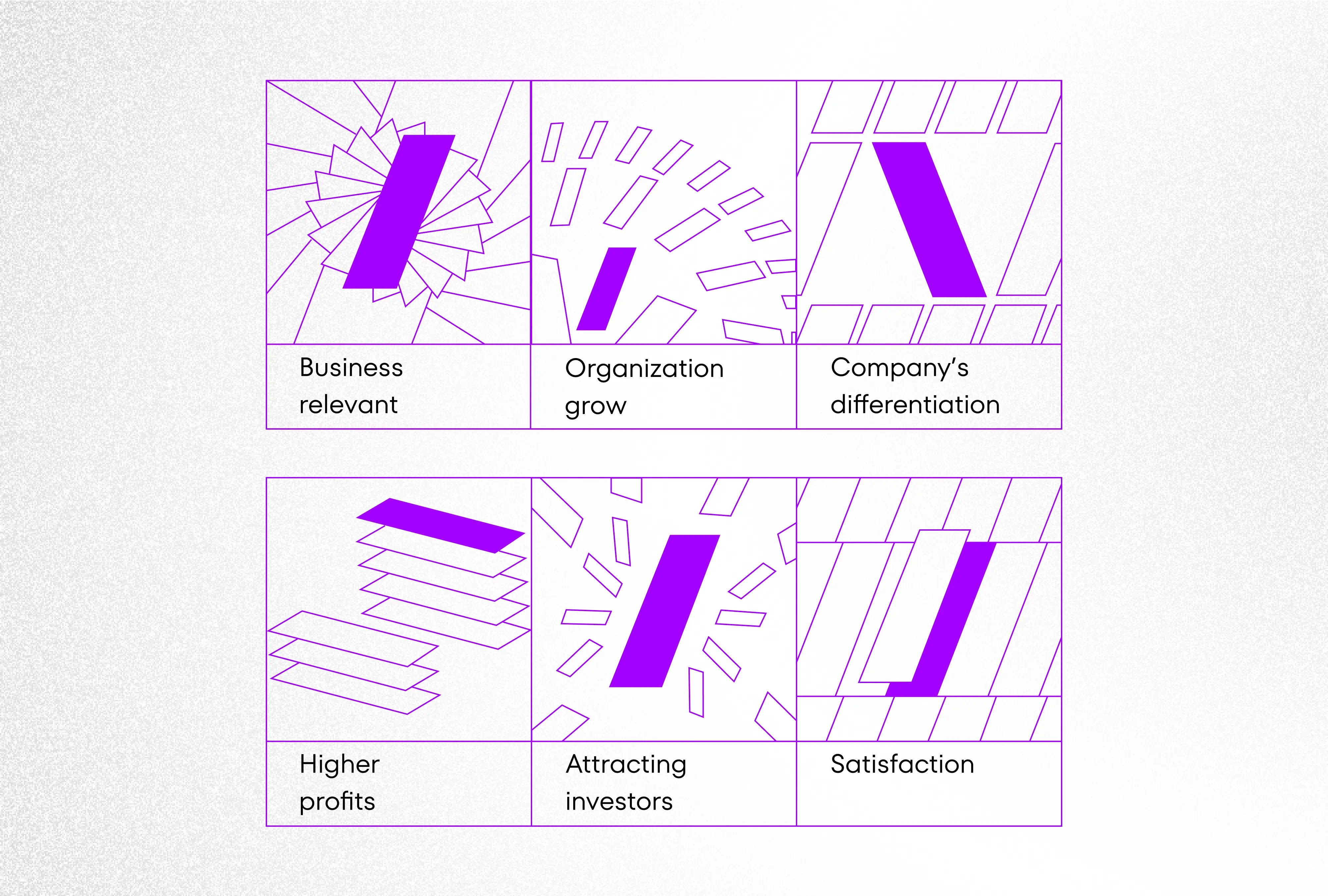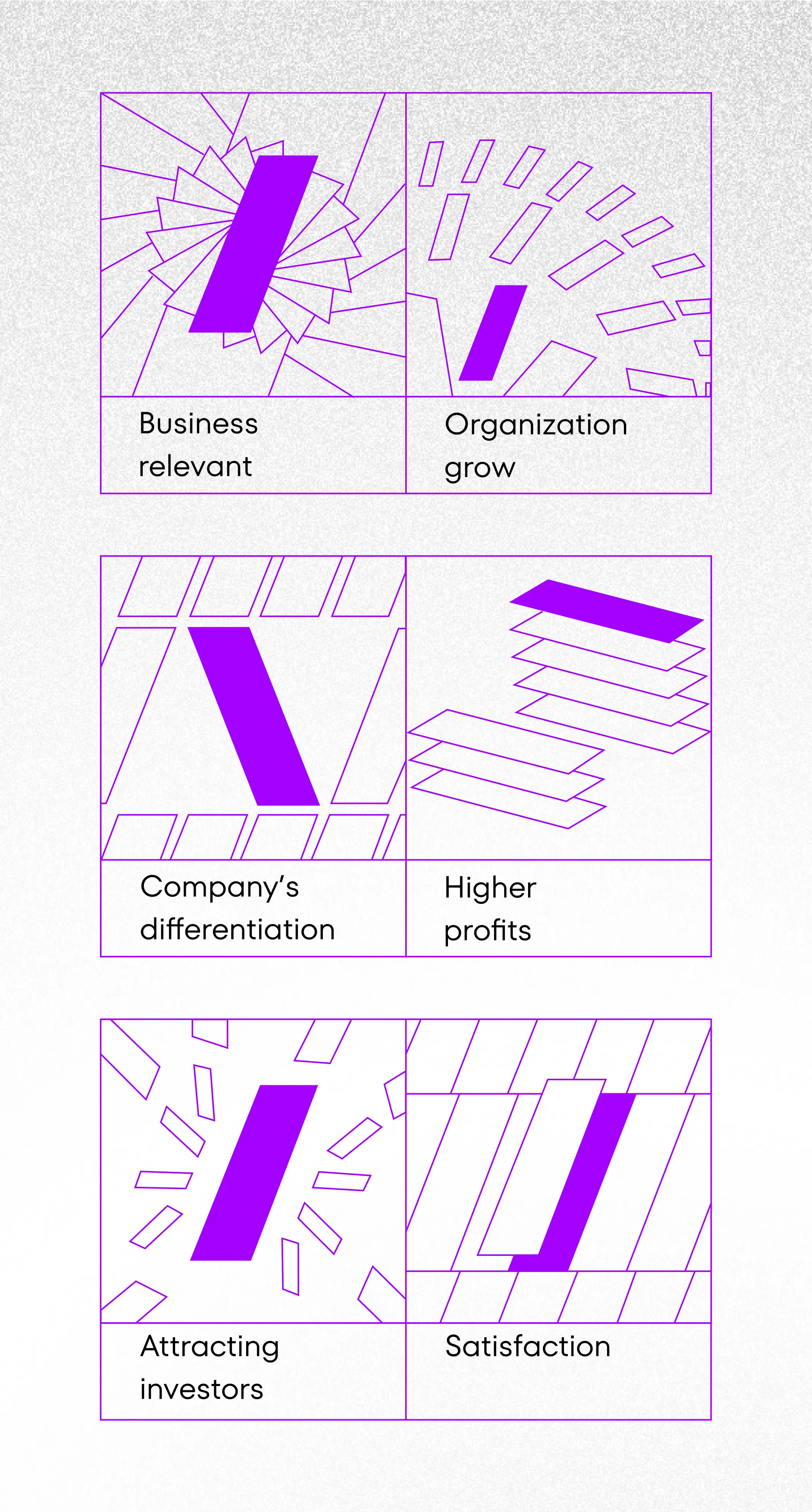November 2nd, 2022 | by Leszek Całka
How to Reach for Innovation and Beyond?

Table of contents
Let’s talk about innovation. You probably have your own thoughts on this concept, but today I’ll try to present a couple of little-known facts about it.
In this article, we’ll explore:
- What exactly is innovation and how it’s different from creativity?
- Where does innovation come from?
- How you can benefit from an innovative approach?
- What are the behaviors of innovative companies?
- Why companies don’t make innovation their key competitive advantage?
- How to support innovation on both organizational and team levels?
- And finally – how to plan for innovation?
Before we begin, a quick comment: our point of focus here is product and process innovation, rather than organizational and marketing innovation. This way of understanding innovation can touch on many various aspects – starting from an idea for a project to the solutions used during its implementation.
What’s Innovation?
Innovation is often compared to creativity. They’re even sometimes used interchangeably, although wrongly so, as they’re not the same.
Creativity fosters unique ideas and many businesses love it, however, creative ideas don’t always lead to innovations.
Innovation is a strategy, service, product, or business model that is both useful and novel. Simply put, innovation is a significant change that makes something we’re working on different from the usual approach.
We can distinguish two categories of innovation: sustaining and disruptive.
Sustaining innovation enhances an organization’s processes or technologies to improve its product or services, while disruptive innovation happens when smaller companies “challenge” the bigger ones.
Where Does Innovation Come From?
Innovation is born inside. It can come from obsession, history, focus, discipline, patience, and perseverance. It’s often induced by the need to prove yourself or to identify a problem.
But innovation is usually not the sole idea of one genius visionary, although it’s often thought to be so.
Nowadays, with the ever-present complexity of issues, innovation is the fruit of the labor of a team. So, the team genius is responsible for the introduction of innovation rather than the one sole visionary, and the generation of it should be the primary goal of every organization.
What’s in It for Me? Benefits of Innovation
Business owners tend to say “adapt or die” when speaking of aiming for success. Because of the extreme growth of the modern world, it’s true for most companies.
This need for change and growth is an amazing opportunity for businesses, and the companies that embrace innovation have a great chance to meet the demands of their customers.
Let’s quickly share the benefits of introducing innovation.
6 Benefits of innovation


Warning: Undefined array key “caption” in /var/www/cshark/releases/14/web/app/themes/cshark/template-parts/blocks/image-section/image-section.php on line 37
- Innovation keeps your business relevant
To keep afloat, your business will eventually need to change and adapt to the new realities, as everything around us is constantly evolving. Technology is a huge driving factor for that. This makes innovation one of the keys to long-term prosperity and success. Just look at enterprises like Tesla, Netflix, Amazon, or Facebook.
- Innovation helps your organization grow
To expand, companies choose either the path of incremental, slow growth while improving their products and processes or acquiring and merging with other businesses. You can also choose to rethink your services (or products), which can allow you to scale more quickly.
- Innovation helps your company be different
Innovation means doing something different than everyone else. It will distinguish your business from all the others on the market.
- Higher profits
A product that will fulfill the needs of potential clients much better than the product of your competitors will probably be highly successful. And will bring you higher profits as a result.
- More opportunities for getting investors
Innovative products tend to generate more opportunities for getting funding.
- Satisfaction
Is there anything better than internal satisfaction? An innovative product that comes alive will bring lots of satisfaction on the organizational, team, and personal levels.
Behaviors of Innovative Companies
You may now wonder what are the behaviors and values shared by innovative companies.
First and foremost, they experiment. To be innovative, you have to go beyond the obvious, as well as move from the existing business to new ventures. Those companies aren’t scared of questioning and encouraging others to act that way. They want to challenge the status quo while looking for new approaches and answers to common questions.
Innovative businesses are customer-focused since innovation often revolves around people’s needs, and are collaborative because good ideas come from the team. The competition forces organizations to look inside, share perspectives, and work together to achieve a common goal.
It’s not enough to only read about innovation, it’s also good to learn from others.
- We can take Etsy as a great example of that. This global online marketplace encourages its employees to publicly share their errors and never blames them for failing. Instead, they acknowledge their mistakes and help the whole organization learn from them.
- Shopify supports innovation by blending peer review with traditional rewards. By using a platform, they allowed co-workers to reward each other, strengthening collaboration and reducing internal hierarchy.
- We can also take a quick look at Starbucks and Audi, which by opening up for employee suggestions restructured the customer experience, and gained record savings (23.4% more than the year before for Audi).
Why Companies Don’t Make Innovation the Key Point for Competition?
To make innovation happen, there’s a great need for an outside-the-box and brave approach, which also means taking risks.
Many business executives claim that they can’t innovate because:
- They don’t know their customer well enough and aren’t sure they want something new.
- There’s no need to rush toward innovation.
- They have too many processes and don’t have the space to go wild and crazy.
- Their margins are too thin to innovate.
Companies are often scared of getting in the way of their accomplishments. Success breeds greed and… greed hinders innovation. They fail to innovate because of the structured business models, and because they’re scared of uncertainty.
What’s the best way out of it?
To innovate outside the company by creating ventures, investing in start-ups, or acquiring wholly-owned subsidiaries.
How to Foster Innovation on an Organizational Level?
Waiting for innovation to happen means creating an environment for it to bloom.
You have to think about how to creatively, continuously, and successfully stimulate the creative potential of the employees. It’s also crucial to come up with a way to support the growth and development of the creative abilities of the team that’s meant to bring in said innovation. This should be taken into consideration at the very beginning of the project, including deadline definition and budget planning – a project where we expect innovation can take up more resources.
Steps to take to promote innovation:
Step 1
Create processes that will capture ideas. They can include a suggestion box or workshops dedicated to brainstorming ideas.
Step 2
Promote taking risks and experimenting. Ensure a supportive atmosphere where people can feel welcome to express their ideas without criticism.
Step 3
Reward and celebrate success!
How to Support Innovation on a Team Level?
First and foremost, the most important thing to invite innovation within a team is to support the team members.
It’s crucial to carefully balance the two opposites, which means:
- provide support for experimenting and learning – rather than ensuring effectiveness,
- show patience – rather than introduce elements of time pressure,
- encourage bottom-up initiatives – rather than top-down interventions.
To successfully support innovation, you have to keep things fun, without unnecessary pressure or stress. A relaxed atmosphere will help the company’s culture and create a sense of freedom.
It’s also crucial to build trust within the team, so people feel committed to the organization’s mission.
What is more, building a positive working environment and encouraging collaboration can also bring in new, valuable ideas.
Always remember to limit any paperwork to a minimum, since bureaucracy is essentially the opposite of innovation. When people are forced to follow the rules, their ability to think creatively is limited. After all, we want them to think outside the box, not keep them inside.
How to Plan for Innovation?
While some ideas may come to you out of nowhere, you can also give innovation a little push. A great way to test your concept is by studying the market and assessing the competition. There’s never too much that you can know and be aware of.
However, before you dive right into it, think about what impact this innovation will have on your business, what (if any) extra training and resources it may require, and how to handle the finance side of things. Always set long-term and short-term goals with a plan for how to achieve them, and regularly review them.
Conclusion
To create an innovative product, you have to put all your energy into it. You need to carefully prepare and set up the right environment each step of the way. Innovation requires a willingness to experiment while leaving no room for fear of failure.
Innovation can’t be forced, but you can take steps to invite it into your company.
Even though creative ideas usually aren’t born overnight, it’s all worth the effort. There’s never a 100% guarantee you’ll succeed, but if you do, the profit and satisfaction will be unprecedented!


